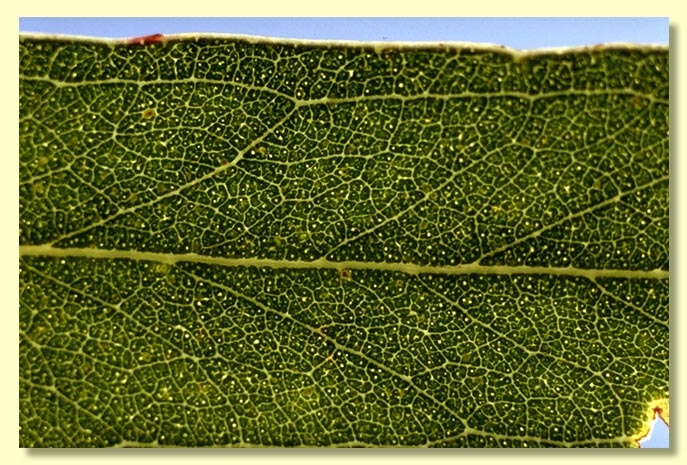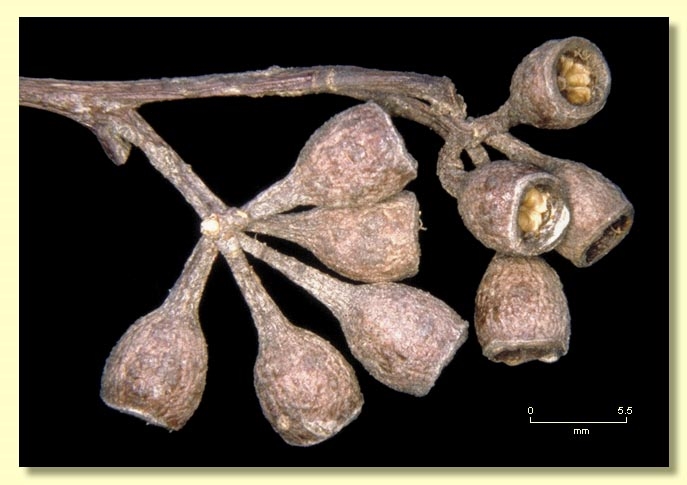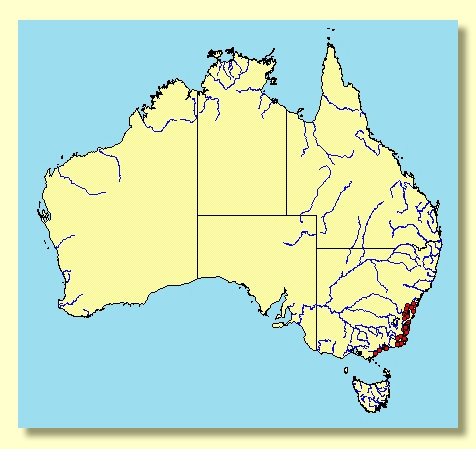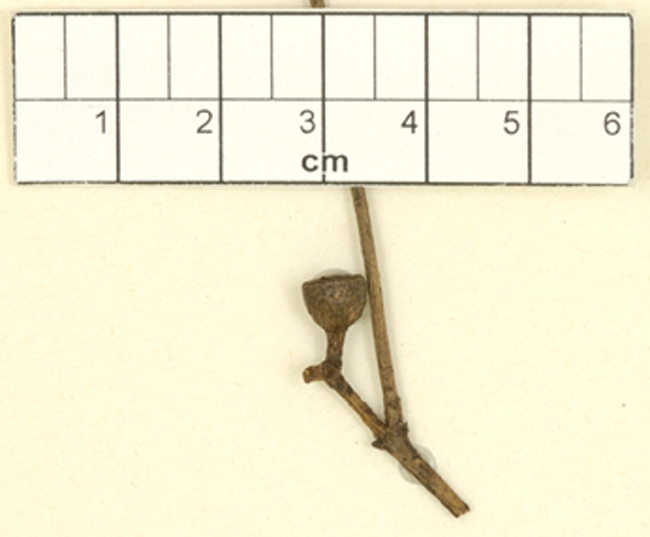Euclid - Online edition
Eucalyptus bosistoana
Eucalyptus | Symphyomyrtus | Adnataria | Apicales | Submelliodorae
Eucalyptus bosistoana F.Muell., Austral. J. Pharm. 10: 293 (1895).
T: between Nicholson R. & Tambo R., Vic., C.L.Schlipalius s.n.; lecto: MEL 10389, fide J.H.Willis, Muelleria 1: 165–166 (1967).
Residual syntype: Genoa River, Barnard s.n. 1884.
Bark partly or wholly rough on trunk but sometimes almost smooth, branches always smooth; rough bark box-type, thin and flaky, mottled grey and white patches or grey-brown, smooth bark white, cream, yellow or grey, sometimes with with ribbons of decorticated bark in the upper branches.
Juvenile growth (coppice or field seedlings to 50 cm): stem rounded in cross-section; juvenile leaves opposite for a few pairs then alternate, petiolate, oblong to elliptical to ovate, 3–7 cm long, 1.8–3.3 cm wide, margin entire, rarely crenulate, pale green.
Adult leaves alternate, petiole 1–1.8 cm long; blade lanceolate to falcate, 5.8–20 cm long, 0.7–2.7 cm wide, base tapering to petiole, concolorous, glossy or dull, green, side-veins acute or sometimes at an angle greater than 45°, densely to very densely reticulate, intramarginal vein well removed from margin, oil glands island and intersectional.
Inflorescence usually axillary unbranched, less commonly terminal compound, peduncles 0.7–1 cm long, buds 7 per umbel, pedicels 0.3–0.8 cm long. Mature buds obovoid to ovoid, 0.6–0.8 cm long, 0.3–0.5 cm wide, green to yellow, smooth, scar absent, operculum conical to rounded rarely shortly beaked, stamens irregularly flexed, all fertile, anthers adnate to filaments, cuboid to globoid, dehiscing by broad lateral pores, style long, stigma pin-head shaped, locules mostly 5 or 6, the placentae each with 4 vertical ovule rows. Flowers white.
Fruit pedicellate (pedicels 0.4–0.7 cm long), cup-shaped, barrel-shaped or hemispherical, 0.4–0.8 cm long, 0.4–0.8 cm wide, disc descending, valves 5 or 6, near rim level or enclosed.
Seeds black, brown or grey, 0.9–2 mm long, ovoid or flattened-ovoid, dorsal surface shallowly pitted or almost smooth, hilum ventral.
Cultivated seedlings (measured at ca node 10): cotyledons bilobed to oblong; stems square in cross-section; leaves always petiolate, opposite for 5 to 10 nodes then alternate, ovate-orbicular, 4–8.5 cm long, 3–6.5 cm wide, base usually tapering, discolorous, mid-green above, paler beneath.
Flowering has been recorded in January, February, March, April and July.
A tall tree of Gippsland in Victoria and south-eastern New South Wales, south from Wolgan Valley, although a smaller form occurs on the Southern Tablelands, e.g. between Goulburn and Bungonia Gorge. It is thinly rough-barked, has long narrow adult leaves, flowers with all stamens fertile, and is particularly distinctive in the fruit, which has five or six valves. In this respect it may be confused with E. melliodora (four or five valves), which differs in the rougher bark and buds with inflexed stamens and staminodes. Both species have two opercula intact and at maturity therefore no operculum scar.
Eucalyptus bosistoana belongs in Eucalyptus subgenus Symphyomyrtus section Adnataria (the boxes) because the buds have two opercula, ovules are in four rows, seeds are flattened-ovoid, cotyledons are reniform, and anthers are rigid on the staminal filaments. Within section Adnataria, E. bosistoana, together with E. argophloia, a Queensland endemic, forms series Submelliodorae, further distinguished by having buds with the outer and inner opercula united and shed together at flowering time, all stamens fertile and fruit with five or six valves.

















